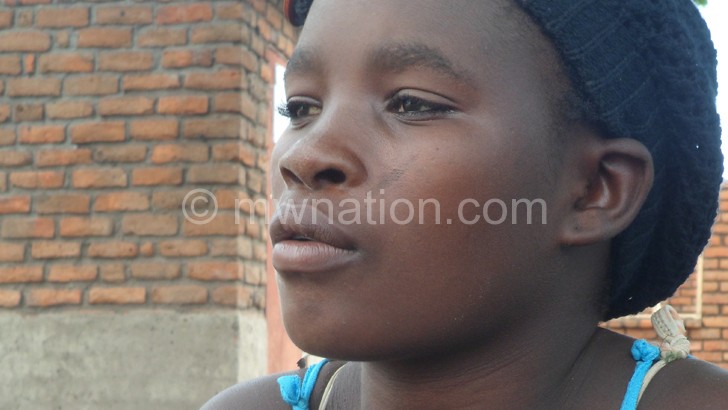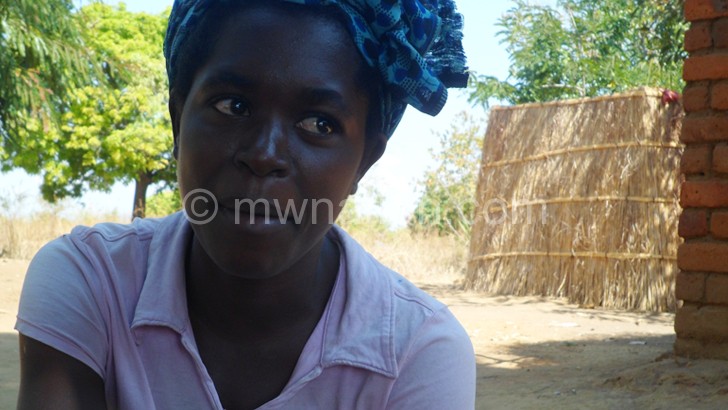A tale of two girls
The first part of Lucy Jamison’s story is nothing unusual about girls’ education in Malawi.
Born in Mwadzama Village, Traditional Authority (T/A) Mwadzama, Nkhotakota, Central Malawi, Lucy had all the cultural and traditional expectations to fulfill and become an acceptable woman.

Even as she enrolled in Standard One at Namvuwu Primary School in the district, Lucy was well aware that girls like her barely go as far as Standard Eight. Most get captured by early pregnancies that end up in equally early marriages.
Not only that!
The village she hails from is barely a kilometre from Lake Malawi. Here, girls such as Lucy, in their early teens, easily fall to fishermen.
In fact, even parents easily marry off their daughters in their early teens to fishermen because they are considered economically independent.
If it is not marriage, girls here, in their early teens, meet their social needs by engaging in casual sex with fishermen—something that leads to teen pregnancies, and even worse, HIV and Aids.
That is why in the usual version of the story; Lucy could have fallen to the gallery. In fact, her story could, today, have been similar to that of Mary Natho.
Now 21, Mary—who started primary education at the same school with Lucy has four children, yet not in a marriage. At 14, while in Standard Five, Mary was impregnated by a boy who promised marriage.

Her parents, she told The Nation, encouraged her to marry the boy. They stayed married for three years, blessed with two children, but in the fourth year, hell broke loose.
Her husband started seeing another woman and ditched her. She married another man a year later where she got two children, but the marriage too failed to work.
Today, she is back at her parents’ house with no one to take care of her and the four children.
“I am still young,” she says while trying to write her name on the ground, “I will marry again.”
But as her goal is to return to a third marriage, Lucy, her classmate, is now a primary school teacher at the same school they learnt.
At 22, she only has one child and she confided in The Nation that in two years she will have her last. Married to a fellow teacher, Lucy’s story underlines heroic acts of rural girls in their quest to get educated.
“Just in our village, I had 14 friends, all of them girls, who we started school together. I am the only survivor. The last of my friends to get married was Elube. She got married while in Standard Six. The rest [including Mary] got married even before that,” she says.
Her family was not anywhere rich in the village. What with the father, a fisherman, and the mother, just a house wife?
Their proceeds, recalls Lucy, could not even meet the basic needs of a family comprising eight children.
However, despite that, her parents, inspired by a neighbour who was a teacher at Namvuwu, encouraged the little Lucy, their last born, to stay the education course. They resisted every force to marry her off by providing most of the basic necessities that push girls to men. Their hope was that Lucy would, one day, be their redemption.
“I passed Standard Eight and got selected to Nkhotakota Secondary School. After that, I went to a teacher training college and came back to my village as a teacher,” she says.
By modern capitalist standards, Lucy may not be rich: she lives in a three-bedroomed house and she hardly depends on her husband on anything. However, by the standards of her impoverished village, she is the model of progress.
“Right now, I am building an iron-roofed house for my parents. I want them to appreciate what they stood for by resisting getting me married at an early age,” she says.
Lucy and Mary’s different stories capture critical issues regarding how, through educating a girl child, Malawi can contain its population growth and spur the economy.
In the first place, Malawi has a young population. The 2008 Population and Housing Census showed that 49 percent of Malawians are under 15 years.
Population expert Jesman Chintsanya says as these youth cohorts reach reproductive age, greater education and access to modern methods of contraception will be critical for couples to delay, space, and limit births.
“For health and personal development, delaying early marriage and pregnancy is life changing,” he says.
Currently, the teenage pregnancy rate is high: 26 percent of all Malawian women aged 15-19 years are currently pregnant or have delivered a child, according to the 2008 census.
Fewer younger married women (15 to 19 years old) than older women (35 to 39 years old) practice family planning.
Additionally, adds the census, the median number of months between birth intervals is much higher for 35-39 year olds (38 months) than for teenagers (26 months).
At a societal level, experts note, expanding the educational and economic opportunities for girls and young women has a significant impact on early childbearing, which will, in turn, affect national fertility rates and development.
Consider the virtuous circle: An extra year of primary school boosts girls’ eventual wages by 10 percent to 20 percent. An extra year of secondary school adds between 15 and 25 percent.
Girls who stay in school for seven or more years typically marry four years later and have two fewer children than girls who drop out. Fewer dependents per worker allows for greater economic growth.
The World Food Programme (WFP) in 2010 found that when girls and women earn income, they reinvest 90 percent of it in their families. They buy books, medicine and bed nets.
“Investment in girls’ education may well be the highest-return investment available in the developing world,” Larry Summers wrote when he was chief economist at the World Bank.
Unfortunately, the 2010 Demographic and Health Survey (DHS) shows that less than one in five girls make it to secondary school.
Nearly half are married by the time they are 18; one in seven across the country marries before she is 15.
Young women with no education are more than 11 times likely to have began childbearing than those with secondary and higher education (45 percent compared with four percent), shows the 2010 DHS.
However, one question remains: How can Malawi police its girls to stay in school?





